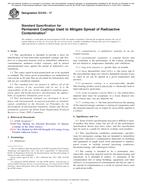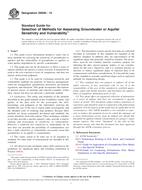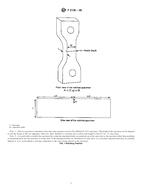1.1 Computed tomography (CT) may be used for new applications, or, in place of film radiography, provided that the capability to disclose physical features or indications that form the accept/reject criteria is fully documented and available for review.
1.2 The CT systems addressed in this practice utilize a set of transmission measurements made along a set of paths projected through the test object from many different directions. Each of the transmission measurements within these views is digitized and stored in a computer, where they are subsequently conditioned (for example, normalized and corrected) and reconstructed by one of a variety of techniques. An in-depth treatment of CT principles is given in Guide E1441.
1.3 Computed tomography (CT), as with conventional radiography and radioscopic examination, is broadly applicable to any material or test object through which a beam of penetrating radiation may be passed and detected, including metals, plastics, ceramics, metallic/nonmetallic composite material, and assemblies. The principal advantage of CT is that it provides densitometric (that is, radiological density and geometry) images of thin cross sections through an object. Because of the absence of structural superposition, images are much easier to interpret than conventional radiological images. The new user can quickly learn to read CT data because images correspond more closely to the way the human mind visualizes 3D structures than conventional projection radiology. Further, because CT images are digital, the images may be enhanced, analyzed, compressed, archived, input as data into performance calculations, compared with digital data from nondestructive evaluation (NDE) modalities, or transmitted to other locations for remote viewing, or a combination thereof. While many of the details are generic in nature, this practice implicitly assumes the use of penetrating radiation, specifically x ray and [gamma] ray.
1.4 This practice provides procedural information for performing CT examinations. The techniques and the applications associated with CT examination are diverse. This practice is not intended to be limiting or restrictive, but rather to address the general use of CT technology and thereby facilitate its use.
1.5 This standard does not purport to address all of the safety concerns, if any, associated with its use. It is the responsibility of the user of this standard to establish appropriate safety and health practices and determine the applicability of regulatory limitations prior to use. For specific safety statements, see Section 8, NBS Handbook 114, and Federal Standards 21 CFR 1020.40 and 29 CFR 1910.96.
Product Details
- Published:
- 05/10/2000
- Number of Pages:
- 11
- File Size:
- 1 file , 130 KB


